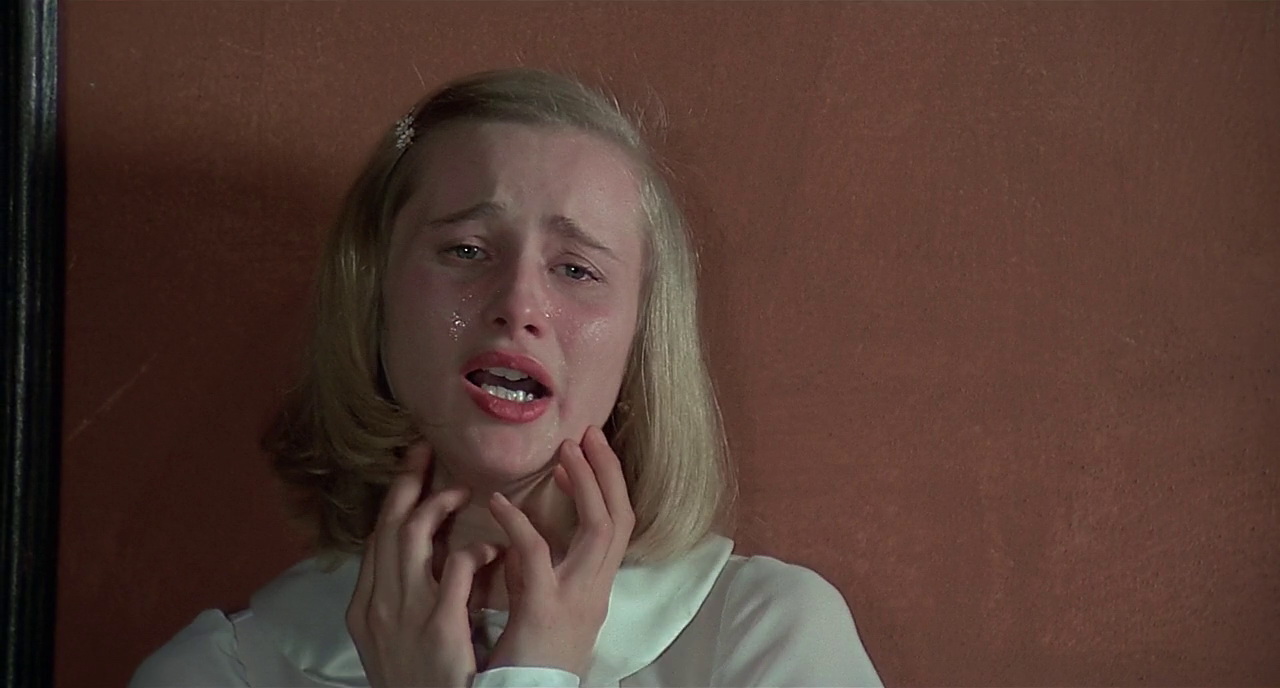
To begin, the heading is of course shameless clickbait. No one can definitively say what the most perverse films are. Rather these are some perverse films. For many, these films will not even seem that perverse. However, all the selected films are in some way perverse, often in distinctive ways. By perverse, this article does not mean perverted.
There is a clear difference between types of perversity. Poe’s Imp of the Perverse is propelled by a childish, manic contrariness. This sense of contrariness, of glee and joy has a juvenile quality associated with childhood and possibly a strange type of innocence.
These films are not all concerned with sadistic violence and sexual divergence. They often explore the perverse or play with cinematic conventions in perverse ways. They even show that the very act of viewing may be associated or inscribed within a voyeuristic matrix of pleasure.
The notion of perversion is itself a strange one. It has clear subversive implications, a defiance and closeness with the childish id refusing social authority. And yet perversions are kept secret and thus far from disrupting norms actually take on the contours of power and oppression. Perversions can be a type of accomplice to the pathologies of the powerful and become a form of abuse.
But there is a theological and tragic dimension to perverseness too. Humanity’s grasping at forbidden fruit is what liberates humanity and grants the human being a sense of right and wrong. The merits of the fall also are a curse as they co-exists with death and a perverse yearning to return to a state where we can be as free and innocent as animals untouched by knowledge.
The self-conscious qualities of the perverse can be liberating and all pleasure and truth come to us in a broken and perverted state, what Kant called humanity’s crooked timbers. To quote W.H. Auden’s verse at the outbreak of the Second World War, registering the perversity of the world and a need to find affirmation amid such a horrendous circumstance:
“Defenceless under the night
Our world in stupor lies;
Yet, dotted everywhere,
Ironic points of light
Flash out wherever the Just
Exchange their messages:
May I, composed like them
Of Eros and of dust,
Beleaguered by the same
Negation and despair,
Show an affirming flame.”
10. L’Age d’Or tie with Salò, or the 120 Days of Sodom tie with Import/Export
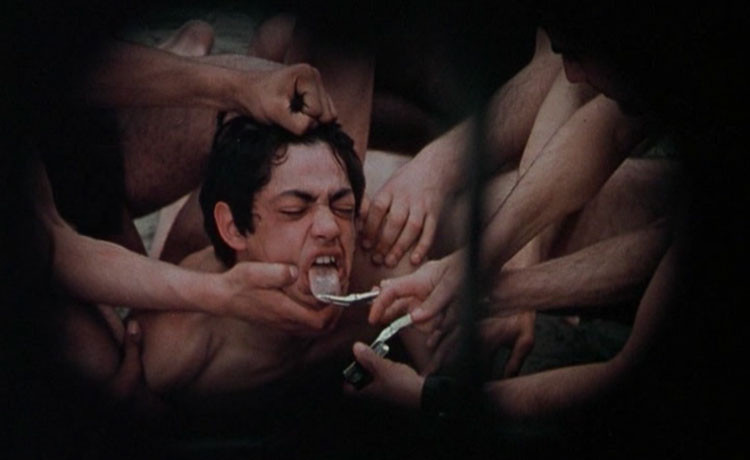
L’Age d’Or is a surrealist film by Luis Buñuel following the depravities of the wealthy elite. The film explores their darker urges in order to scandalize the bourgeois, but the film also delights in a sort of perverse surrealist humor, opening with a documentary on scorpions. There are some delightfully amusing moments in the film.
Salò, orthe 120 Days of Sodom by Pasolini, adapted from de Sade, reveals a fear he had about the state of freedom and sexual exploitation, namely that far from setting everyone free, such revolution in fact benefits the powerful at the expense of those without power, enabling abuse. The absence of limitations and social norms are a liberation for those with power, not the powerless. A cinematic analysis of perversion,Pasoliniframes fascism as the next stage of capitalism’s libidinous eruption.
As stated in the film, fascism is the ultimate anarchism. Although one may disagree, Pasolini’s view was that communism needed to be founded on laws. Pasolini thereby turned his back on sexual revolution, seeing the commodification of the body as a type of fascism. The infamous excrement eating scene in the film is meant to recall fast-food.
Import/Export is a film that shows two people exploited in Eastern and Western Europe who never cross paths but both find their dreams of hope dashed by the cruel sobering reality of capitalism.
It should be noted that what makes this film truly perverse is its own defiance of the spectacle of cinema, with additions of naturalism and exploitation of elderly people suffering from dementia. One of the protagonists works in a hospital and we witness a ward with the actually aged who are confused, thereby challenging our sense of safe distance.
L’Age d’Or and Salo are both delirious, ludic adaptations of de Sade but Import/Export is a more chilling reflection on bourgeois exploitation and abuse.
9. Inland Empire and Eraserhead
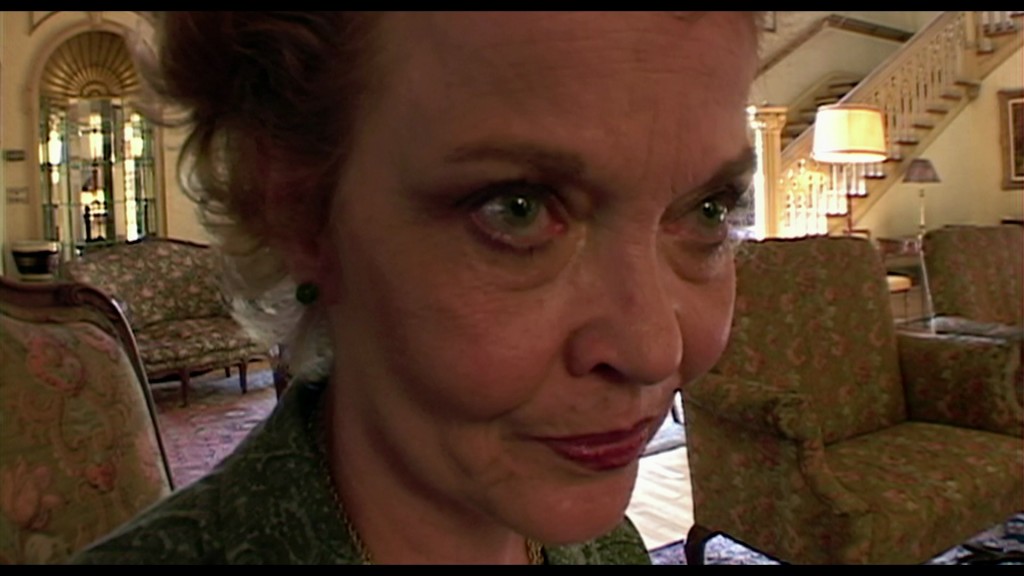
Both films are works of frightening mindfuckery by the master of perversity, David Lynch where reality disintegrates amid distortion and disgusting caricature with a strong sense of suprapersonal forces lurking beneath the psyche.
By probing into the depths of the psyche Lynch shows us our worst fears and desires realized.
8. Breaking the Waves tie with Irreversible

Both films seem rather different but both play with the audience in a twisted and perverse manner. Von Trier’s film uses a heightened unreal, melodramatic narrative presented in a largely gritty realist manner with the surprising and jarring interruption of magic realism at the close.
The film concerns a woman, Bess, whose injured, sickly husband asks her to sleep with other men—at first so that she can find another but later to cater for his voyeurism.
Bess refuses but when his condition worsens she comes to believe it is God telling her that she must sacrifice her soul and sleep around as part of a strange fidelity. SlavojŽižek argues that goodness becomes an excess and transforms into a disturbing quality in the film.
Gaspar Noé’sIrreversible seems a Dantean fable where one goes from hell through purgatory and then arrives at heaven. But this narrative becomes devastating as the film is a backward reconstruction where we witness the conclusion first. As such, one’s life can so easily change from heaven to hell with no hope of redemption.
The strong and pessimistic theological quality evokes the sense of the fall, but is far crueler than anything Christianity has envisaged. Unlike the fantasy of hell, this film presents a reality of unending torment.
7. Palindromes
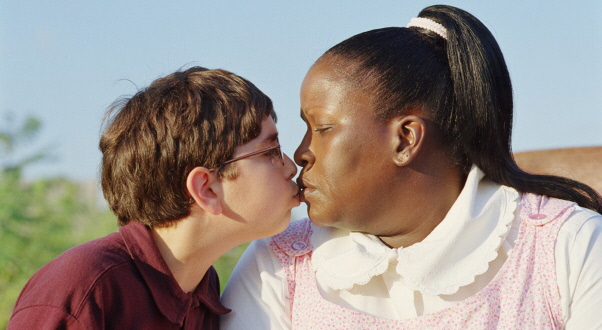
Todd Solondz’s film follows the feelings and self-image of an adolescent girl who was pressured by her liberal parents into having an abortion as she undergoes various emotional states and hooks up with an older, pedophiliac pro-lifer who murders doctors who perform abortions.
When I say the film follows her emotional states, it does so through a brilliant method. The protagonist named Aviva is sometimes played as a large woman of color and sometimes by a girl with reed hair. Eight actors play her.
In many ways, this film may not seem as perverse as other Todd Solondz films such as Happiness and Storytelling which actually at the very least tie with Palindromes. But the film was selected because its perversity exists through a tenderness to its subjects and via a nonjudgmental approach, one far less based on cringe than Storytelling. (This is to say nothing of the director’s desire to work with Paris Hilton.)
Moreover, the film makes fun of conservative and liberal pathologies and quirks in ways both satirical and gentle and thereby is all the more challenging. There is a certain perversity or uncertain perversity in the Palindromes’ treatment of these issues which constitute a sort of internal tensionwith the film’s own ludic and confrontational premise.
6. Videodrome
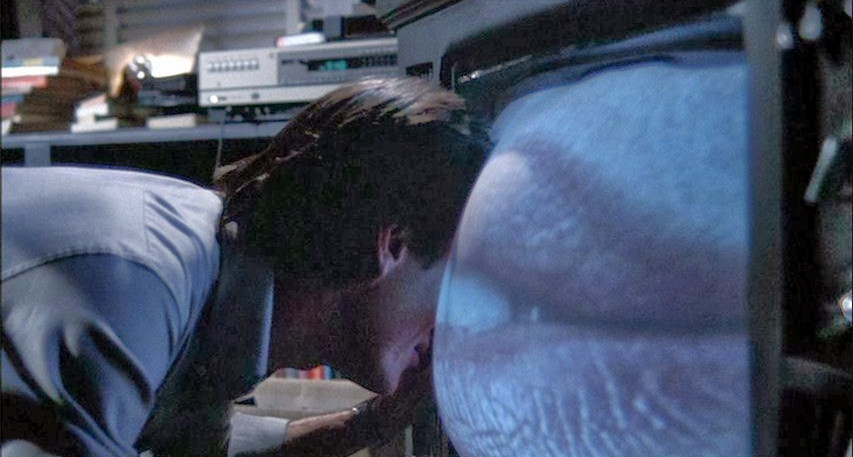
Situated via a debate on television sex and violence, Cronenberg’sVideodrome captures anxieties concerning technology and the posthuman.
The plot centers onvideos that induce psychotic imaginings and cause one’s body to explode with cancer and the film features the protagonist massaging a Yonic wound in his chest and stomach with a gun.